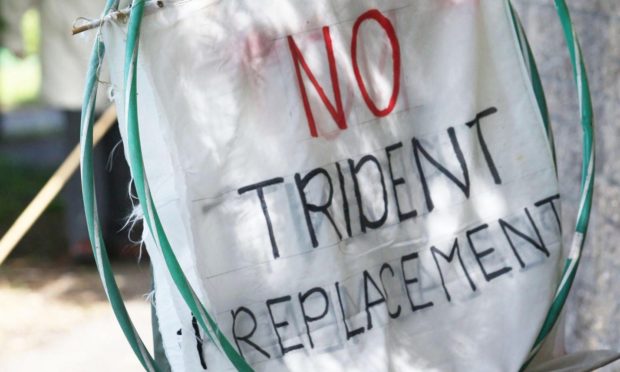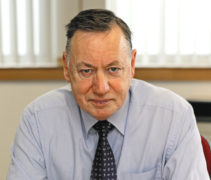An event on this day almost 60 years ago possibly – probably – saved the world as we know it.
The saviour was a Russian sailor, Vasili Arkhipov, a man whose name will mean nothing to most people. The truth is that but for Vasili’s stubbornness, there’s every chance that none of us would be here today.
On October 27 1962, the world was in the grip of the Cuban missile crisis, mostly remembered for US President John F Kennedy successfully blocking the installation of Soviet missiles on Cuba. On that day, Vasili was second-in-charge of the Soviet Foxtrot-class submarine B-59. It was sailing near Cuba, but in international waters. Despite this fact, when it was detected by the aircraft carrier USS Randolph and its 11-destroyer escort, depth charges were dropped in an attempt to force it to the surface. The submarine was too deep to monitor radio signals, so the crew, under fire from above, were unsure whether or not war had broken out.
The vessel was armed with nuclear torpedoes, and the captain wanted to fire one at the carrier. However, he had to reach agreement with two other senior officers on board before such an attack could be launched. One agreed, but the other, Vasili, refused. Despite a heated argument, that meant the torpedo could not be fired. Had the three men agreed, the torpedo would have exploded a nuclear warhead under the fleet of a dozen US warships. Vasili’s refusal thus averted what would have sparked, almost certainly, a worldwide nuclear conflict.
Most of today’s electorate might not realise the tensions that existed in those Cold War days when the threat of a nuclear war was at the back of just about everyone’s minds. And the threat was never closer to becoming reality than on that late October day in 1962. One of President Kennedy’s advisers later stated that this was not only the most dangerous moment of the Cold War, but “the most dangerous moment in human history”.
It may be history, but it still matters today. Last week, I took part in an online hustings to select the next SNP candidate in my local constituency for next year’s Holyrood elections to the Scottish Parliament. One of the questions put to the candidates was their view on the Faslane Trident nuclear submarine base on the Clyde. In the event of an independent Scotland, should it be removed immediately, should there be a transition period, or should there even be a deal to allow it to stay in return for a lease agreement, they were asked.
Happily, I can report that all three candidates were unequivocal. Trident should be removed from the Clyde, and on no account should a Scottish Government even contemplate doing a cash deal with Westminster to allow the base to stay, they agreed.
Faslane, officially Her Majesty’s Naval Base Clyde, is home to the Royal Navy’s four Vanguard-class nuclear submarines, plus their missiles and warheads, which are stored at the nearby Coulport armaments depot. However, there have been recent suggestions that an independent Scotland could earn as much as £1 billion per year by leasing back the base to the UK. This idea has been given short shrift by the SNP leadership, and given the replies to the questions from candidates last week, that position is unlikely to change.
The SNP’s policy is straightforward – total opposition to Trident and the removal of nuclear weapons from Scotland. That is easy to say. The practicalities could be a little more tricky, though, with experts suggesting that the construction of an alternative site and the transfer of all the hardware, probably to somewhere like Devonport, taking up to 20 years to complete. The SNP, however, suggest it could be done in something like five years or less, with Faslane then being used as the base for Scotland’s own defence forces.
The UK Government, meanwhile, is negotiating with the US for the purchase of the next generation of nuclear missiles to replace the Trident system. There’s also the small matter of the £200bn costs of the replacement of the Vanguard submarines by a Dreadnaught class, due to be in operation by 2028. Should the Ministry of Defence perhaps at the same time also be looking ahead and planning for somewhere else to base them? With the growing likelihood of independence, and the resolution of the SNP to remove nuclear weapons from Faslane, it would surely make sense.
Many Scots are unhappy, not only at the thought of such weapons of mass destruction being sited so close to major centres of population, but also at photographs of nuclear convoys from the warhead assembly and maintenance base at Burghfield, in Berkshire, trundling through Stirlingshire and up Loch Lomondside to Coulport in the early hours. One of the benefits of Scottish independence when it comes will be the removal of these obscene weapons of mass destruction. And perhaps October 27 can then be christened Vasili Arkhipov Day in memory of one of the unsung heroes of modern history.
Campbell Gunn is a retired political editor who served as special adviser to two first ministers of Scotland











